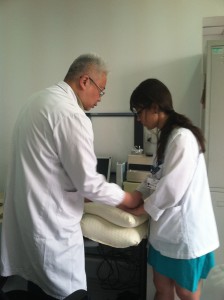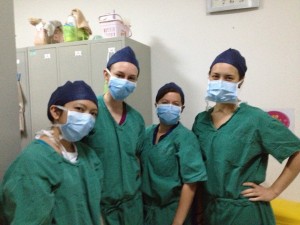UT Goes Global
by Patty Gelb
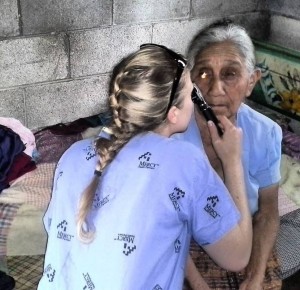 “As I often start my stories, a patient came into the clinic yesterday…”
“As I often start my stories, a patient came into the clinic yesterday…”
This was the beginning of the blog post from Dr. Anne Ruch who was in Guatemala at the time of writing. She was part of a global health medical mission from The University of Toledo. Ruch went on to describe the story of a 46-year-old woman that came into the clinic. The woman was diabetic and had visited the clinic many times.
This time the woman was there with her daughter who was having infertility issues. While waiting she told Ruch, “by the way, my foot is bad again.” She then proceeded to take off a bandage to reveal a toe that was almost twice its normal size and dripping pus. Ruch quickly put in a phone consult to Dr. Coral, an accompanying physician. They both agreed that the best course of action was antibiotics and to advise the woman go to the hospital to amputate her toe.
When Ruch suggested this, the woman’s eyes filled up with tears. She reminded Ruch about Tracy Benson, the UT medical student who came with her on a mission the year before. That time when the woman came to Ruch with the same issue on her other foot, Benson had encouraged Ruch to incise, drain and pack it.
When Ruch looked back at the notes, the little picture in the chart of the woman’s previous problem looked a lot like this problem. “I remember at the time thinking that Tracy was being overly optimistic,” said Ruch in her blog post. She had felt it was too late for that toe but now it looked completely normal. “Look how good it is,” the woman exclaimed.
Ruch remembered how Benson had the woman come back twice a day for the whole week so she could clean and “pack” her toe. “She cared for that lady,” says Ruch in her blog post. “She washed her feet as Jesus did for his disciples. So, I said a silent little prayer of thanks to Tracy for giving this woman many months of health and for showing her an example of how Jesus teaches us to live.”
Ruch went ahead and did the same procedure she did before. “It is truly in God’s hands how it will all turn out,” said Ruch. “But for now, Tracy’s act of great kindness brought me and this woman a little closer to the love of God.”
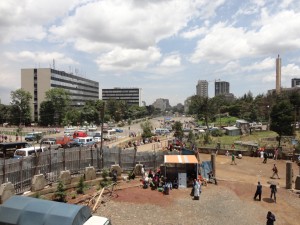 There are endless stories like this when describing The University of Toledo’s global health programs. “Inspirational” is how many of the students and staff who attend a global health mission describe it. “Life changing” and “emotional” are other words often heard. Dana Meyer, a fourth year medical student who was also in Guatemala in August, 2013 said “the global health experiences help ground students and reminds us why we went into medicine in the first place because medical school can be very stressful.”
There are endless stories like this when describing The University of Toledo’s global health programs. “Inspirational” is how many of the students and staff who attend a global health mission describe it. “Life changing” and “emotional” are other words often heard. Dana Meyer, a fourth year medical student who was also in Guatemala in August, 2013 said “the global health experiences help ground students and reminds us why we went into medicine in the first place because medical school can be very stressful.”
Meyer explained that it is easy to forget that patients are people who need your help, especially during the third year of medical school when students are under a lot of pressure to see patients, get everything right and to learn everything they have to learn. “The medical mission trips really help remind you of that, because the people there are so grateful,” said Meyer. “They really need you and appreciate you being there.”
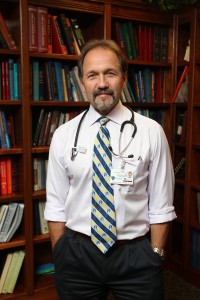 The global health program at The University of Toledo started about seven years ago when Dr. Kristopher Brickman – UTMC chief of staff, chairman and medical director, department of emergency medicine and director of the office of global health – was approached by a group of students. They knew that he did medical mission work internationally and they were hoping he would help create a global health program here at UT. A quick survey of students determined there was significant interest in creating such a program. Brickman and the group of students met with Dr. Jeffery Gold, chancellor and executive vice president for biosciences and health affairs and dean of the College of Medicine and Life Sciences. Brickman explained to Gold that he would be willing to support this initiative and felt it was important for UT.
The global health program at The University of Toledo started about seven years ago when Dr. Kristopher Brickman – UTMC chief of staff, chairman and medical director, department of emergency medicine and director of the office of global health – was approached by a group of students. They knew that he did medical mission work internationally and they were hoping he would help create a global health program here at UT. A quick survey of students determined there was significant interest in creating such a program. Brickman and the group of students met with Dr. Jeffery Gold, chancellor and executive vice president for biosciences and health affairs and dean of the College of Medicine and Life Sciences. Brickman explained to Gold that he would be willing to support this initiative and felt it was important for UT.
 Things really started coming together on a trip to China and India that Brickman attended with Dr. Lloyd Jacobs, president of The University of Toledo. It was during a discussion about global health in the back of the car from Delhi, India, to Agra, India, where Jacobs told Brickman that he was interested in developing these programs but to not stop at the College of Medicine and Life Sciences; take it to the entire university.
Things really started coming together on a trip to China and India that Brickman attended with Dr. Lloyd Jacobs, president of The University of Toledo. It was during a discussion about global health in the back of the car from Delhi, India, to Agra, India, where Jacobs told Brickman that he was interested in developing these programs but to not stop at the College of Medicine and Life Sciences; take it to the entire university.
“He told me, ‘I know you are aware of the university’s limited funding for initiatives such as these, but I want you to be the champion to develop this program and make it happen,’” said Brickman. “I agreed to do it as long as he agreed to support it moving forward since it was going to be a huge project.”
Brickman had received the blessing of Gold to develop any programs or relationships that he felt were relevant to the program. Since they were already in India and going to China, that was where the first programs and relationships were developed.
Fast forward six years later and The University of Toledo now has 17 different international affiliations and memorandums of understanding (MOUs) with some of the top academic centers in China, India and the Middle East. There are MOUs in Beirut, Jordan, Kenya and Ethiopia. UT holds a unique relationship in the Philippines with the Ministry of Health where there is a signed agreement with the secretary of health.
UT has developed these relationships all over the world so its students have the opportunity to be involved in global health activities. These opportunities are primarily for fourth year medical students, but are also available for nursing, physician assistants, pharmacy, engineering, physical therapy, foreign language students as well as the Toledo community.
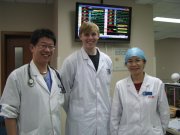 There are two kinds of experiences that the students can have. There is the medical institutional experience where the students work with a medical institution and do a one month rotation. And there are also medical missions, which are a bit different because they are led by UT faculty and tend to be a week to two-week-long experiences.
There are two kinds of experiences that the students can have. There is the medical institutional experience where the students work with a medical institution and do a one month rotation. And there are also medical missions, which are a bit different because they are led by UT faculty and tend to be a week to two-week-long experiences.
The medical institution experiences are a full month under the direction of the faculty at the foreign site. It is similar to the work they do as third and fourth year medical students here in the U.S. They see and evaluate patients and participate in patient care as a part of their observership. The students are also very involved in academics. They are required to give a lecture at their foreign site as well as give a presentation upon their return to UT.
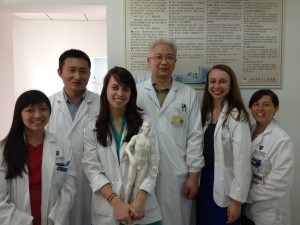 The mission activities are different in that students are accompanied by an active faculty member from the College of Medicine and Life Sciences. These mission trips generally last a week or two in places like Honduras, Guatemala, Nicaragua, Haiti, the Dominican Republic, Africa and the Philippines. Students then apply for academic credit based on the clinical activities under the direction of the accompanying faculty member.
The mission activities are different in that students are accompanied by an active faculty member from the College of Medicine and Life Sciences. These mission trips generally last a week or two in places like Honduras, Guatemala, Nicaragua, Haiti, the Dominican Republic, Africa and the Philippines. Students then apply for academic credit based on the clinical activities under the direction of the accompanying faculty member.
Over the course of the last six years some 400 students have participated in these global health initiatives.
“I didn’t necessarily expect that they would gain a lot of very different and unique medical knowledge,” said Brickman. “But I did expect them to see a culture very different from what they have grown up in. Different from the one they have trained as medical professionals in a health care system.”
 Brickman really wanted the global health programs at UT to be as much a cultural experience as an academic experience. He feels it is important to learn to function in a system that has very different resources than the one that the students are accustomed to here in the U.S.
Brickman really wanted the global health programs at UT to be as much a cultural experience as an academic experience. He feels it is important to learn to function in a system that has very different resources than the one that the students are accustomed to here in the U.S.
“We are the country that is aberrant when it comes to how our health care policy works,” Brickman said. “Everyone else functions more within their means and that is a message that I want the students to understand from a global perspective, most of the world functions very differently than the one you trained in. It doesn’t mean that we are superior to them. It’s just different.”
 These missions are an eye-opening experience for the students. According to Brickman, the first week is very overwhelming. The second week they start to understand the differences a little better and begin to embrace those differences. Typically by week three and four the students become really engaged.
These missions are an eye-opening experience for the students. According to Brickman, the first week is very overwhelming. The second week they start to understand the differences a little better and begin to embrace those differences. Typically by week three and four the students become really engaged.
The global health program is meant to take the student out of his or her comfort zone. Typically, students begin this experience with a significant amount of knowledge and understanding about medicine and are put into an environment that is critically different from everything they know. The students come back with a much richer and deeper knowledge of how different cultures throughout the world function, commonly with far less resources than the U.S. healthcare system.
“Most of the students who are able to participate in global health experiences come back with more compassionate views of the world and its health care limitations,” Brickman said. “They become involved and connected to charitable efforts in the future, whether in their own neighborhoods or with global efforts.”
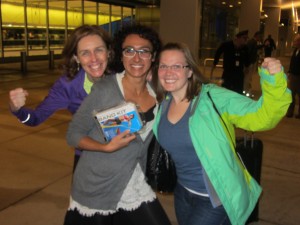 And the results of these trips are remarkable. During the 2013 Nicaragua Mission trip, the medical team treated 530 patients (244 children and 286 adults). The dental team provided 802 dental sealants and 211 fluoride treatments for 543 children. The women’s health team performed 45 pap tests and physical therapy treated 60 patients.
And the results of these trips are remarkable. During the 2013 Nicaragua Mission trip, the medical team treated 530 patients (244 children and 286 adults). The dental team provided 802 dental sealants and 211 fluoride treatments for 543 children. The women’s health team performed 45 pap tests and physical therapy treated 60 patients.
The generous donation from two alumni donors allowed the team to provide 25,000 doses of analgesics, 6,000 doses of antibiotics, 15,000 doses of vitamins and anti-parasitic treatment for 1,000 people.
“None of this would have been possible without the dedication of University of Toledo students and faculty. Our team was truly interdisciplinary,” stated Steven Cogorno, a fourth year medical student and the 2013 Nicaragua mission team leader in a follow up letter to the director of student affairs.
Expanding, Cogorno explained, “ Many of the students commented that they felt hesitant when we arrived, but by Friday they were confident in their clinical abilities. These students are best and brightest of the UT College of Medicine community. They were eager to learn, able to accept and integrate feedback and committed to serving others. It was truly a pleasure to work with such capable and dedicated individuals.”
One of the barriers for students getting to participate in a global health experience is lack of funds. The primary cost for the global health programs to the university is one staff member who coordinates all international programming. Students have to pay their own way for these trips outside of limited funding (in the form of a travel grant) provided by the Center for International Studies and Programs. Fortunately, the costs once in the foreign location are minimal. Students stay in the dorms where, oftentimes, limited meals are provided. But the costs for airfare can range from $1,500 to $3,000 per trip.
“Right now, since we don’t have funding, it is primarily up to the students to fund the majority of the project and that is my only disappointment in this program,” Brickman said. “It is only available to those students who have the money to do it.”
The program is always in need of funds. What funding they have received goes toward scholarships to assist those students who are unable to cover their costs. Brickman encourages anyone interested in participating in the global health programs or wanting to learn more to contact Deborah Krohn, the global health advisor at deborah.krohn@utoledo.edu or 419.530.2549.
 “We have really become a major player on a global scene and I believe we have become a more relevant institution because of our participation in our global networks,” Brickman said. “Based on some of the things we have been able to develop because of this exposure and our participation, I think it drives us to a higher level.”
“We have really become a major player on a global scene and I believe we have become a more relevant institution because of our participation in our global networks,” Brickman said. “Based on some of the things we have been able to develop because of this exposure and our participation, I think it drives us to a higher level.”
Brickman and his Global Health Committee are working on a January 2014 fundraising initiative. Their hopes are to create an endowment to help build the Global Health program; thus, making international electives more accessible to the student body. “We plan to launch our newest campaign in the coming year,” said Brickman. “We hope this type of grassroots fundraising will not only highlight how far we’ve come as a unit, demonstrating the high demand for international electives from our student body, but also help raise awareness both at the university level and the Toledo community for the role we play in today’s public health issues across the globe.”


